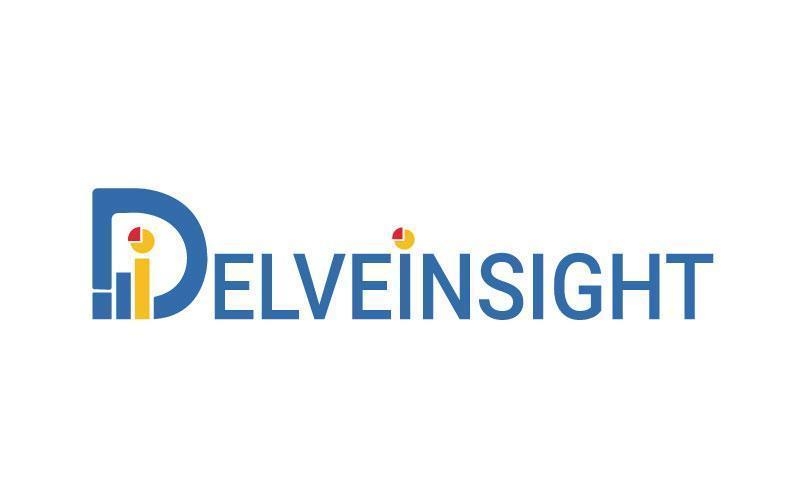With Pheochromocytoma increasingly prevalent worldwide and contributing to comorbidities such as diabetes, cardiovascular disorders, and certain cancers, the need for safer and more effective therapies is rising. DelveInsight reports that over three pharmaceutical and biotech companies are actively advancing more than three therapeutic candidates for Pheochromocytoma. These candidates are in various stages of clinical and preclinical development, reflecting significant innovation and dedication to tackling this pressing health concern.
DelveInsight’s “Pheochromocytoma Pipeline Insight 2025” delivers a comprehensive analysis of the current R&D landscape. The report examines clinical trial progress, novel treatment approaches, mechanisms of action, competitive positioning, and strategic initiatives by key companies. It is an essential resource for researchers, healthcare investors, and decision-makers seeking insights into the evolving Pheochromocytoma therapeutics market and the breakthroughs driving its future direction.
Explore the Cutting-Edge Landscape of Pheochromocytoma Drug Development
Key Takeaways from the Pheochromocytoma Pipeline Report
-
DelveInsight’s Pheochromocytoma pipeline report highlights a dynamic landscape, featuring over three active companies advancing more than three therapeutic candidates for Pheochromocytoma treatment.
-
In May 2025, the FDA approved belzutifan (Welireg), an oral HIF‑2α inhibitor, for both adult and pediatric patients (≥12 years) with locally advanced, unresectable, or metastatic pheochromocytoma or paraganglioma (PPGL). This approval represents the first oral systemic therapy for PPGLs, supported by the LITESPARK‑015 Phase II trial, which showed an overall response rate of approximately 26% and a median duration of response of about 20 months.
-
Earlier, in January 2025, the FDA accepted Merck’s supplemental NDA for belzutifan in PPGL under Priority Review, setting a PDUFA target date of May 26, 2025.
-
Leading companies, including Enterome and Perspective Therapeutics, are actively exploring novel therapies aimed at improving the Pheochromocytoma treatment landscape. Notable pipeline candidates in various stages of development include EO2401 and others.
Pheochromocytoma Overview:
Pheochromocytoma is a rare tumor that generally develops in the adrenal medulla, the inner part of the adrenal glands. While typically benign, these tumors produce excessive catecholamines—mainly adrenaline (epinephrine) and noradrenaline (norepinephrine)—hormones critical to the body’s stress response. Overproduction of these hormones can lead to serious, potentially life-threatening cardiovascular complications. Although most cases are diagnosed in individuals aged 30 to 50, pheochromocytomas can appear at any age.
Symptoms primarily result from elevated catecholamine levels and often include high blood pressure (either persistent or episodic), severe headaches, profuse sweating, palpitations, and rapid heart rate. Additional manifestations may include tremors, anxiety, and unexplained weight loss. Because these symptoms overlap with many other conditions, diagnosing pheochromocytoma can be difficult. In some instances, particularly when tumors are large, patients may also experience abdominal discomfort or a feeling of fullness.
Download the Pheochromocytoma sample report to know in detail about the Pheochromocytoma treatment market
Pheochromocytoma Pipeline Analysis
The Pheochromocytoma pipeline insights report 2025, provides insights into:
-
Provides comprehensive insights into key companies developing therapies in the Pheochromocytoma Market.
-
Categorizes Pheochromocytoma therapeutic companies by development stage: early, mid, and late-stage.
-
Highlights major companies involved in targeted therapy development, including both active and inactive (paused/discontinued) projects.
-
Reviews emerging Pheochromocytoma drugs under development based on:
-
Stage of development
-
Pheochromocytoma Route of administration
-
Target receptor
-
Monotherapy vs. combination therapy
-
Pheochromocytoma Mechanism of action
-
Molecular type
-
-
Offers detailed analysis of:
-
Company-to-company and company-academia collaborations
-
Pheochromocytoma Licensing agreements
-
Funding and investment activities supporting future Pheochromocytoma market advancement.
-
Unlock key insights into emerging Pheochromocytoma therapies and market strategies here: https://www.delveinsight.com/report-store/pheochromocytoma-pipeline-insight?utm_source=abnewswire&utm_medium=market&utm_campaign=kpr
Pheochromocytoma Emerging Drugs
-
EO2401: Enterome
EO2401 is a pioneering, off-the-shelf peptide-based immunotherapy that employs OncoMimics™—microbial-derived peptides that mimic tumor antigens IL13Ra2, BIRC5, and FOXM1—alongside a CD4+ helper peptide (UCP2) to trigger a precise immune response against tumor cells. The therapy is designed to train the immune system to identify and attack glioblastoma-like cells. EO2401 is being investigated in the Phase I/II SPENCER trial in combination with nivolumab for patients with advanced adrenocortical carcinoma or malignant pheochromocytoma/paraganglioma. Early results were presented at ASCO 2022, and the therapy has progressed to Phase II studies for pheochromocytoma.
Pheochromocytoma Pipeline Therapeutic Assessment
Pheochromocytoma Assessment by Product Type
• Mono
• Combination
• Mono/Combination
Pheochromocytoma By Stage
• Late-stage products (Phase III)
• Mid-stage products (Phase II)
• Early-stage product (Phase I) along with the details of
• Pre-clinical and Discovery stage candidates
• Discontinued & Inactive candidates
Pheochromocytoma Assessment by Route of Administration
• Oral
• Parenteral
• Intravenous
• Subcutaneous
• Topical
Pheochromocytoma Assessment by Molecule Type
• Recombinant fusion proteins
• Small molecule
• Monoclonal antibody
• Peptide
• Polymer
• Gene therapy
Download sample pages to get an in-depth assessment of the emerging Pheochromocytoma therapies and key Pheochromocytoma companies
Table of Contents
1. Report Introduction
2. Executive Summary
3. Pheochromocytoma Current Treatment Patterns
4. Pheochromocytoma – DelveInsight’s Analytical Perspective
5. Therapeutic Assessment
6. Pheochromocytoma Late-Stage Products (Phase-III)
7. Pheochromocytoma Mid-Stage Products (Phase-II)
8. Early Stage Products (Phase-I)
9. Pre-clinical Products and Discovery Stage Products
10. Inactive Products
11. Dormant Products
12. Pheochromocytoma Discontinued Products
13. Pheochromocytoma Product Profiles
14. Pheochromocytoma Key Companies
15. Pheochromocytoma Key Products
16. Dormant and Discontinued Products
17. Pheochromocytoma Unmet Needs
18. Pheochromocytoma Future Perspectives
19. Pheochromocytoma Analyst Review
20. Appendix
21. Report Methodology
Request the sample PDF to get detailed insights about the Pheochromocytoma pipeline reports offerings
About DelveInsight
DelveInsight is a leading Business Consultant and Market Research firm focused exclusively on life sciences. It supports Pharma companies by providing comprehensive end-to-end solutions to improve their performance.
Media Contact
Company Name: DelveInsight Business Research LLP
Contact Person: Kritika Rehani
Email: Send Email
Phone: +14699457679
Address:304 S. Jones Blvd #2432
City: Las Vegas
State: Nevada
Country: United States
Website: https://www.delveinsight.com/

